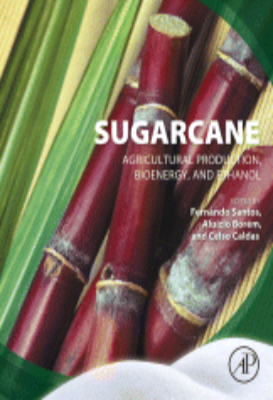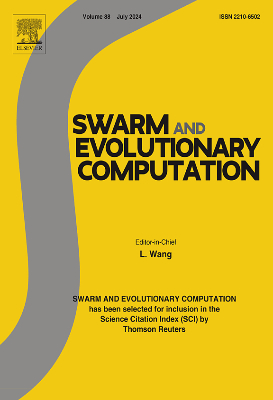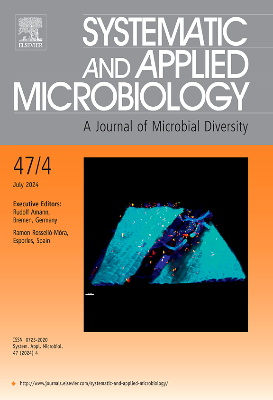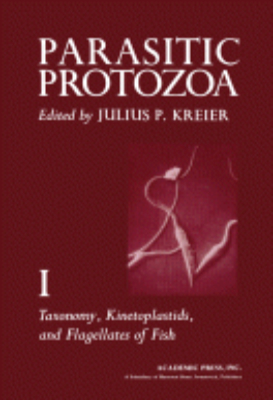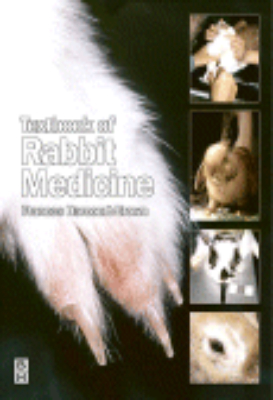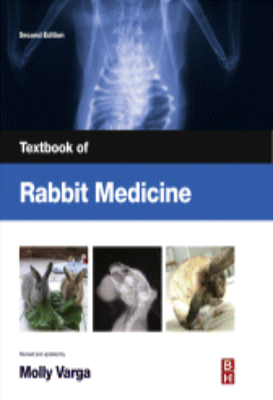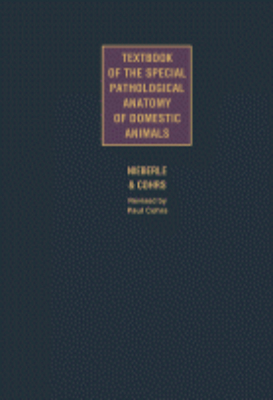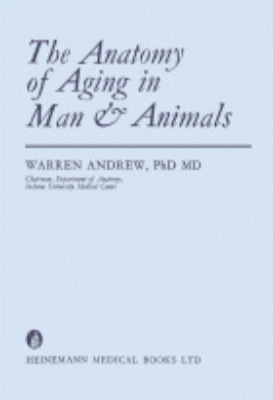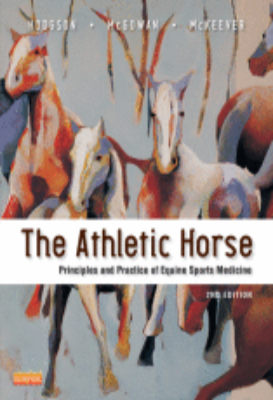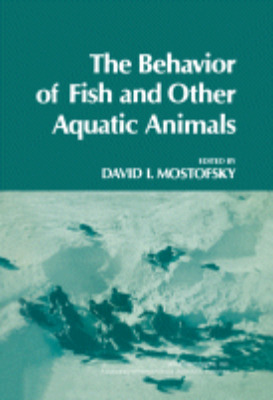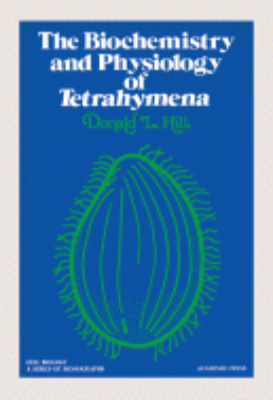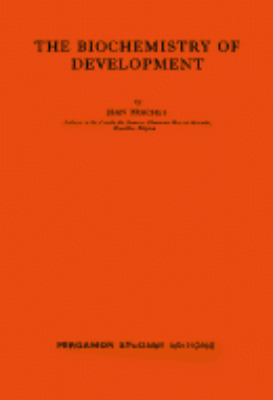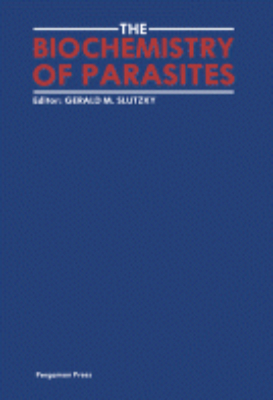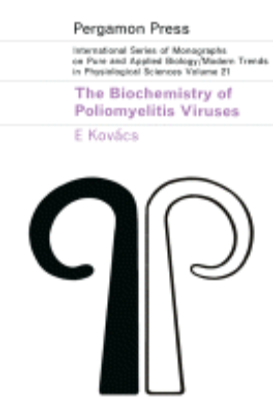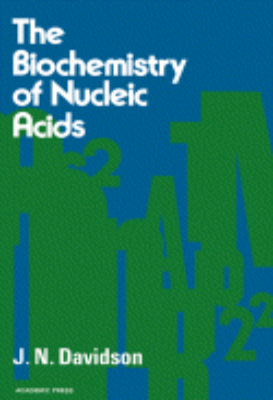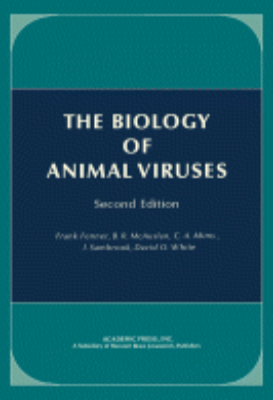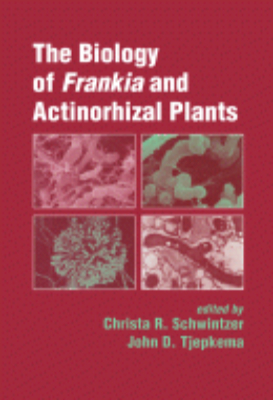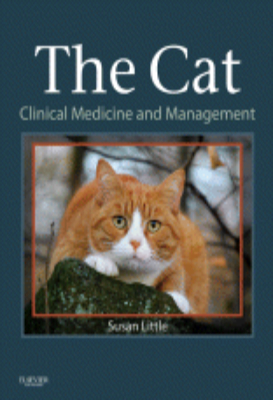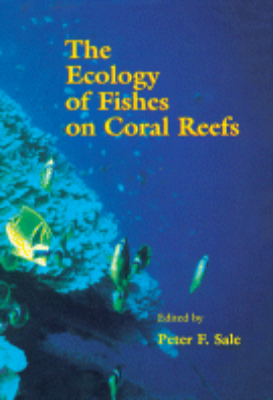E-Resources
Sugarcane
"Sugarcane: Agricultural Production, Bioenergy and Ethanol explores this vital source for ""green"" biofuel from the breeding and care of the plant all the way through to its effective and efficient transformation into bioenergy. The book explores sugarcane's 40 year history as a fuel for cars, along with its impressive leaps in production and productivity that have created a robust global market. In addition, new prospects for the future are discussed as promising applications in agroenergy, whether for biofuels or bioelectricity, or for bagasse pellets as an alternative to firewood for home heating purposes are explored. Experts from around the world address these topics in this timely book as global warming continues to represent a major concern for both crop and green energy production. Key Features. Focuses on sugarcane production and processing for bioenergy. Provides a holistic approach to sugarcanes potential from the successful growth and harvest of the plant to the end-use product. Presents important information for ""green energy"" options"
Taxonomy Kinetoplastids and Flagellates of Fish
Parasitic Protozoa, Volume I: Taxonomy, Kinetoplastids, and Flagellates of Fish contains 10 chapters that first discuss the classification of the protozoans, and then explain the system of parasitic protozoans. This reference material focuses on the significant aspects specifically related to Leishmania and trypanosomes, including the trypanosomes causing disease in man and livestock in Africa, as well as the nonpathogenic trypanosomes of mammals. Lastly, the flagellate parasites of fish are described. This book will be invaluable to physicians and veterinarians interested in studying the parasite's disease-causing property in man and livestock.
Textbook of Rabbit Medicine: 2002
Although a lot has been written on the rabbit, much is anecdotal and aimed at the pet owner rather than the veterinarian. Textbook of Rabbit Medicine however, has been specifically written for the veterinary practitioner, using evidence-based material andproviding a comprehensive guide to the diagnosis and treatment of conditions affecting pet rabbits. Basic husbandry, behaviour and nutrition are explained within the concept of health and disease. Essential information on biology and physiology is also provided. Unique illustrations based on original dissections offer an additional insight into this complex animal.Frances Harcourt-Brown is a veterinary surgeon with a specific interest in rabbits. She is widely recognised as an expert and has been acclaimed for her research - receiving several awards, including the BSAVAs Melton award for meritorious contribution to small animal practicefor her work on dental disease in pet rabbits. Textbook of Rabbit Medicine says all there is to say about the pet rabbit: it is an essential purchase for every veterinary practitioner.With illustrations by Nigel Harcourt-Brown
Textbook of Rabbit Medicine: 2013
The new Textbook of Rabbit Medicine draws on the latest information from around the world to make it a truly global resource on all aspects of rabbit medicine and health. It will continue to be indispensable to veterinary surgeons in general practice, veterinary students, referral veterinarians specializing in exotic pets, and veterinary surgeons studying for certificates in advanced veterinary practice. The book is carefully constructed to allow for the biology, husbandry and clinical techniques that pertain to rabbit medicine to be treated comprehensively and conveniently. Clinical chapters follow a logical progression from clinical pathology, through anaesthesia, therapeutics and diseases covered by body system, to surgery and post-mortem examination. The author offers a strong emphasis on clinical practice to ensure the content is as practically useful and accessible as possible. Key points boxes integrated throughout the book provide a stand-alone prcis of important subjects. New clinical techniques boxes are packed with tips from a practising expert who regularly applies this same information in practice.
Textbook of Respiratory Disease in Dogs and Cats
Respiratory diseases are common and often challenging problems in dogs and cats. Animals with respiratory disease tend to have chronic, recurrent problems that are difficult to manage and do not respond easily to therapy. Alternatively, they may have acute, life threatening problems, with difficulty breathing and a high risk of death. Either type of patient can be very stressful to the veterinarian to manage! This textbook offers state-of-the-art advice about management of dyspneic patients, and patients with chronic recurrent disease. The chapters are all written by recognized experts in each specific subject area. The first parts of the book are organized to facilitate rapid use by presenting a problem-based approach to respiratory tract disease, and describing techniques for diagnostic testing and general support of patients with respiratory tract disease. The last section of the book provides an in-depth description of specific respiratory disorders, including their pathophysiology, diagnostics, expected clinical course and management.
Textbook of Special Pathological Anatomy of Domestic Animals
Textbook of Special Pathological Anatomy of Domestic Animals should not be regarded merely as a textbook for students, but rather as one which will also be of assistance to them in their later work, as well as to veterinarians generally working in the various branches of the profession, in the assessment of pathological changes. As many new diseases have become known and much new information relating to pathogenesis and aetiology has been gained since the appearance of the last edition, radical revision of the book has become imperative. The discussions in this book cover the circulatory system, blood-forming organs, reticulo-endothelial system, respiratory system, digestive organs, peritoneum, nervous system, urinary organs, genital organs, organs of locomotion, endocrine glands, and skin.
The Action of Hormones in Plants and Invertebrates
The Action of Hormones in Plants and Invertebrates focuses on the mechanisms of action of hormones in plants and invertebrates, including auxins, vitamins, steroids, and carotenoids. The book considers plant growth hormones, hormone-like substances in fungi, and hormones in insects and crustaceans. This volume is organized into four chapters and begins with a historical overview of the concept of hormones in plants, and then describes assay methods for auxins, along with auxin chemistry, transport, and role in tropisms. The discussion moves to other plant hormones such as wound hormones, flower-forming hormones, vitamins, steroids, carotenoids, rhizocaline, and caulocaline. The book then methodically explains insect hormones and their sources; the role of hormones in reproduction and postembryonic development; and hormone-induced color change in insects. This volume also offers information on the mode of action and physicochemical properties of insect hormones. The book concludes with a chapter on the biological effects of hormones on Crustacea, from sex characteristics to color change, molting and growth, retinal pigment movements, locomotion, and ovarian development. This book will be of interest to biologists, zoologists, botanists, and endocrinologists.
The Agronomy and Economy of Important Tree Crops of the Developing World
"Major tree crops contribute substantially to the economy of many developing countries on the Asian, African and Latin American continents. For example, coffee is the main revenue earner for Kenya. This book provides a comprehensive review of the agronomy, botany, taxonomy, genetics, chemistry, economics, and future global prospects of a range of crops that have great food, industrial and economic value such as cocoa, coffee, cashew, oil palm and natural rubber. Key Features. Discusses the major tree crops of great economic value to the developing world. The author is an eminent scientist who has won numerous awards for his work in this area"
The Agronomy and Economy of Turmeric and Ginger
"Turmeric has been used as a medicine, a condiment, and a dye since at least 600 B.C., while ginger has been used extensively throughout history for its medicinal purposes. The Agronomy and Economy of Turmeric and Ginger brings these two important plants together in one reference book, explaining their history, production techniques, and nutritional and medicinal properties in detail. This book is intuitively organized by plant and use, allowing quick access to information. It puts the uniquely Indian use and history of turmeric and ginger plants into a global context of production and economic aspects. It explores the plants from a botanical perspective, and goes into details of their chemical composition as well. Rounding out the book are chapters on disease and pest control issues. The book is a valuable resource for those involved in the production and marketing of these plants, as well as those looking for more information on the medicinal and nutritional properties of turmeric and ginger. Key Features. The first book to bring together extensive information about turmeric and ginger. Incorporates medicinal, nutritional and agricultural aspects of the two plants. Offers a global perspective"
The Anatomy of Aging in Man and Animals
The Anatomy of Aging in Man & Animals presents a critical review of the characteristics of invertebrates. It discusses the physical features and parts of fishes, amphibians, reptiles, and birds. It also addresses the characteristics and physiology of mammals as well as the organization of the nervous system. Some of the topics covered in the book are the descriptions and species of protozoa; description of porifera, coelenterate, and kinds of rotifer; parts and functions of mollusca; description and reproduction of annelida; types of crustacea; studies on drosophila; analysis of nutrition, temperature, and aging; and development of the nervous system of a bee. The structures of flatworms and the development of roundworms and echinodermata are discussed. An in-depth analysis of the classes of echinoidea is provided. The characteristics of thymus in an adult amphibian are also presented. A chapter is devoted to the description of changing appearance of human skin. The book can provide useful information to scientists, biologists, students, and researchers.
The Athletic Horse
Showing how to maximize performance in horses, The Athletic Horse: Principles and Practice of Equine Sports Medicine, 2nd Edition describes sports training regimens and how to reduce musculoskeletal injuries. Practical coverage addresses the anatomical and physiological basis of equine exercise and performance, centering on evaluation, imaging, pharmacology, and training recommendations for sports such as racing and show jumping. Now in full color, this edition includes new rehabilitation techniques, the latest imaging techniques, and the best methods for equine transportation. Written by expert educators Dr. David Hodgson, Dr. Catherine McGowan, and Dr. Kenneth McKeever, with a panel of highly qualified contributing authors.
The Behavior of Fish and Other Aquatic Animals
The Behavior of Fish and Other Aquatic Animals provides a comprehensive discussion of the behavior of fish and other aquatic animals. It aims to fulfill the need for published materials that can responsibly depict the status quo of existing knowledge, and that can serve to educate the scientist seeking an organized presentation focused on biobehavioral issues and techniques. The book begins by exploring symbiotic relationships in fishes that range from broad multispecific types that have little or no intimacy between symbionts to intimate mutualistic relationships. It then presents studies on the feasibility of using teleost fish as subjects in behavioral toxicology experiments; the visual behavior of fishes; the role of the teleost telencephalon in behavior; and the auditory systems of fishes. The remaining chapters cover the behavior of turtles in land, sea, and fresh waters; visually guided behavior in turtles; the gas bubble disease of fish; and the advantages and limitations of acoustic telemetry, which has been used to obtain data from animals ranging in size from hatchling sea turtles to large tuna and sharks.
The Biochemistry and Physiology of Tetrahymena
The Biochemistry and Physiology of Tetrahymena presents a review of the literature covering the physiology and biochemistry of the ciliate genus Tetrahymena, of which Tetrahymena pyriformis is the most studied species. Organized into 10 parts, this book first provides basic information about Tetrahymena, which is found in almost any body of water and is so unusual that one can debate quite rationally as to whether it is an animal or a plant. Other chapters are restricted to specific subjects about this organism, namely, carbohydrate, lipid, energy, protein, amino acid, purine, pyrimidine, and nucleic acid metabolism. The organisms biochemical genetics, vitamin and inorganic requirements, and evolution are also shown. This book also explores the effect of radiation, drugs, and hydrostatic pressure on Tetrahymena. The documented information presented in this book will be sufficient to stimulate even more interest in the organism.
The Biochemistry of Development
The Biochemistry of Development focuses on advances in chemical embryology. The book first discusses gametogenesis, including the processes of oogenesis and spermatogenesis. The text describes fertilization and related aspects, such as physical, morphological, and metabolic changes during fertilization. The selection also underscores the process of cleavage. Concerns include morphology and cytochemistry of dividing eggs; importance of nucleic acids and proteins; formation of the furrow; and biochemistry of cleavage. The text also looks at the chemical embryology of invertebrate eggs. Examinations are done on the eggs of worms, mollusks, sea urchins, and ascidians. The book also evaluates the chemical embryology of vertebrate eggs. RNA and protein metabolism of intact eggs; chemical nature of inducing substances; and physical properties of inducing agents are underscored. The text also offers information on the biochemistry of differentiation and the biochemical interactions between the nucleus and the cytoplasm during morphogenesis. The selection is highly recommended for readers wanting to study chemical embryology.
The Biochemistry of Foreign Compounds
The Biochemistry of Foreign Compounds presents the various aspects of biochemistry of foreign compounds in relation to toxicology, pathology, and pharmacology. This book discusses the classification of foreign compounds according to usage, namely, food additives, drugs, pesticides, industrial chemicals, and natural foreign compounds. Organized into two sections encompassing 12 chapters, this book starts with the absorption and secretion of foreign compounds. This text then discusses the two phases of reaction in the metabolism of foreign compounds. Other chapters consider the rate at which each reaction proceeds wherein its relative significance may be affected by many factors that may result in changes in the pattern of metabolism and differences in toxicity. This book discusses as well the physiological factors that affect metabolism, including age, sex, pregnancy, disease, and the nutritional state of the animal. The final chapter deals with the metabolism of some of the commonly used industrial chemicals. This book is a valuable resource for biochemists, chemists, toxicologists, pharmacologists, and pathologists.
The Biochemistry of Parasites
The Biochemistry of Parasites documents the proceedings of the Satellite Conference of the 13th Meeting of the Federation of European Biochemical Societies (FEBS) held in Jerusalem, August 1980. The conference presented the opportunity to summarize work done by parasite biochemists and introduce this field to workers in classical biochemistry. The 45 papers in this volume are divided into two sections covering parasite biomembranes and parasite metabolism. The papers in the biomembranes section are further divided in two parts: the parasite membrane (Part I) and adherence of the parasite to host tissues (Part II). Part I is concerned with both classical and novel aspects of membrane structure and function. It includes studies on the membrane of the leishmania; the surface coat of trypanosomes; membrane function; and transport across the cell membrane. Part II covers topics such as the adherence of pathenogenic microorganisms and the importance of of carbohydrates in parasite-host adherence. The papers in the parasite metabolism section focus primarily on three groups of parasites: leishmania, malaria, and helminthes. Topics covered include the isolation and characterization of a proteolytic enzyme from Plasmodium lophurae (duck malaria); the selection and culture of malaria parasites resistant to aminopterin; and regulation of cyclic AMP metabolism in Leishmania promastigotes and amastigotes.
The Biochemistry of Poliomyelitis Viruses
The Biochemistry of Poliomyelitis Viruses deals with the interrelationships and differences of positions in the field of poliomyelitis research. This volume presents a general introduction to viruses as to their descriptions and biological, biochemical, and epidemiological aspects. Clinical poliomyelitis, test measurements in the cerebrospinal fluid, and the actions of the poliomyelitis virus are explained. The isolation of the poliomyelitis virus and some aspects of its immunology and serology through refinements of serologic tools and special techniques, plus the state of poliovirus purification, are noted. This book also gives assumptions about the virus' synthetic activities in vivo based on experiments conducted in other viral diseases other than the polio virus. This text also notes that important discoveries such as those made by Gierer and Schramm or Fraenkel-Conrat provide updated poliomyelitis research. Other research studies are taken into consideration and emphasis is given to the biochemical concept of the polio infection and the related features induced during infection such as the presence of tumors. The most promising trend in research is in the study of enzymes of infected cells leading to an understanding of the biochemistry of viral diseases. The use of inference microscopy and X-ray analysis of cell mass is recommended. This book will prove invaluable for microbiologists, disease investigators, clinical workers, and research scientists.
The Biochemistry of the Nucleic Acids
The Biochemistry of the Nucleic Acids provides an elementary outline of the main biochemical features of nucleic acids and nucleoproteins. The book describes the occurrence and biological functions of nucleic acids, their chemical constituents, and catabolism. This text is organized into 14 chapters and begins with a historical overview, from the discovery of the nucleic acids to their isolation and characterization. The discussion then shifts to bacterial transforming factors and transduction phenomena, along with the genetic function and metabolic stability of DNA, the chemical composition of the cell nucleus, and the Feulgen nucleal reaction. The reader is methodically introduced to the structure and biosynthesis of RNA and DNA; nucleic acids found in viruses; and biosynthesis of mononucleotides. An account of nucleases and related enzymes is also given. A chapter on the precise mechanism by which nucleic acids are broken down in the cell concludes the book. This book is intended for students of biochemistry, chemists, and biologists.
The Biology of Animal Viruses
The Biology of Animal Viruses, Second Edition deals with animal viruses focusing on molecular biology and tumor virology. The book reviews the nature, chemical composition, structure, and classification of animal viruses. The text also describes the methods of isolating animal viruses, how these are grown in the laboratory, assayed, purified, and used in biochemical experiments. The book also describes the structure and chemistry of many known viruses such as the papovaviridae, herpes virus, poxvirus, coronavirus, or the Bunyamwera supergroup. The book then explains the structure and function of the animal cell including the cytoplasmic organelles, the nucleus, inhibitors of cell function, and viral multiplication. Other papers discuss in detail the multiplication of the DNA and RNA viruses, whose mechanisms of multiplication differ from those of other viruses. Other papers discuss the known prevention and treatment methods of viral diseases, as well as the epidemiology and evolution of viral diseases resulting from human's disturbance of the biosphere and from medical and experimental innovations. The text can prove useful for immunologists, veterinarians, virologists, molecular researchers, students, and academicians in the field of cellular microbiology and virology.
The Biology of Frankia and Actinorhizal Plants
The Biology of Frankia and Actinorhizal Plants provides a comprehensive review of Frankia and the actinorhizal plants. It reviews the state of knowledge on all aspects from molecular genetics through ecology to practical applications; describes methods used in research and practical applications; and is a guide to the literature. The book begins with overviews of Frankia and the actinorhizal plants, and developments in the field prior to the first confirmed isolation of Frankia. Next is a series of authoritative chapters on the biology of Frankia, the symbiosis, and actinorhizal plants. Although methods used in research and in practical applications are included throughout the book, they are given special emphasis in the middle section. The final section of the book concerns the ecology and current and potential uses of actinorhizal plants in both the temperate regions and the tropics. This work is intended as a reference text and handbook of methods for a wide audience including established workers and students of Frankia and actinorhizal plants, specialists and students in other areas of nitrogen fixation (including the Rhizobium-legume symbiosis), soil microbiologists, plant physiologists, ecologists, general biologists, foresters, specialists in land reclamation, and managers requiring an authoritative overview of this rapidly developing field.
The Cat
Comprehensive in scope and exclusively devoted to feline medical care, Dr. Susan Little's The Cat: Clinical Medicine and Management is an essential resource for anyone who provides complete, state-of-the-art care to cats. In one convenient volume, you'll find authoritative, clinically-focused information enhanced by full-color illustrations, tables, boxes, algorithms, key points, and much more all in a format designed for quick access. Dr. Little and her expert contributors address the unique concerns and challenges facing the feline practitioner, including the latest advances in feline medical diagnosis and management and their clinical applications to everyday practice. User-friendly and complete, The Cat is also available as an e-book, giving you easy access to the complete, fully-searchable contents online.
The Detection of Fish
The Detection of Fish is a guide on how to locate fish through the indications of its presence in the area and the use of different acoustic instruments. The book has seven chapters, which cover the different types and locations of fisheries; the evaluation of resources of exploratory fishing; the position of fisheries; the two fish detection methods; basic principles of acoustics in relation to fishing; and the estimation of abundance of fish with an echo sounder. Also covered are the study of behavior of fish through acoustic means; the deep scattering layer and its different investigations; and the use of more complex acoustic instruments. The text is recommended for beginning fishermen, entrepreneurs who wish to venture in the fishing business, and those who work for government agencies who oversee fishing and aquatic resources. Marine biologists, especially those concerned with the study of fish, would also find the book as a handy guide.
The Dog Breeder’s Guide to Successful Breeding and Health Management
This unique resource offers a general overview of canine body systems and how each system affects the breeding process. Key topics include nutrition, pharmacology, microbiology, parasitology, vaccinations, genetics, and endocrinology, as well as normal anatomy and disorders of the male and female reproductive systems.
The Ecology of Fishes on Coral Reefs
This book provides a comprehensive and up-to-date review of the ecology of coral reef fishes presented by top researchers from North America and Australia. Immense strides have been made over the past twenty years in our understanding of ecological systems in general and of reef fish ecology in particular. Many of the methodologies that reef fish ecologists use in their studies will be useful to a wider audience of ecologists for the design of their ecological studies. Significant among the impacts of the research on reef fish ecology are the development of nonequilibrium models of community organization, more emphasis on the role of recruitment variability in structuring local assemblages, the development and testing of evolutionary models of social organization and reproductive biology, and new insights into predator-prey and plant-herbivore interactions.
The Economics and Organization of Brazilian Agriculture
"The Economics and Organization of Brazilian Agriculture: Recent Evolution and Productivity Gains presents insights on Brazilian agriculture and its impressive gains in productivity and international competitiveness, also providing insightful examples for global policymakers. In Brazil, as in many countries, many economists and policymakers believe that agriculture is a traditional, low-tech sector that crowds out the development of other economic sectors and the country. This book shows that this anti-agriculture bias is ill-informed, and with population growth, rising incomes, urbanization and diet changes especially in developing countries like China and India on the rise, the demand for food is expected to double in the next 40 years. Brazil has the natural resources, technology and management systems in place to benefit from this expected growth in food consumption and trade. Through real-world examples, the book shows how other low-latitude countries with tropical climate and soils like Brazil especially in sub-Saharan Africa can benefit from the agricultural technology, production, and management systems developed in Brazil. Case studies in each of three key categories, including technology, resource management, and effective government programs provide valuable insights into effective decision-making to maximize the effect of each. Key Features. Provides important and practical insights into achievable agricultural options via case studies. Addresses the use of natural resources, technological advances, and management systems to create viable, adaptive economic growth. Applies lessons learned in Brazil to improving both economic and ecological resource-sustainable agriculture for other regions and countries"

